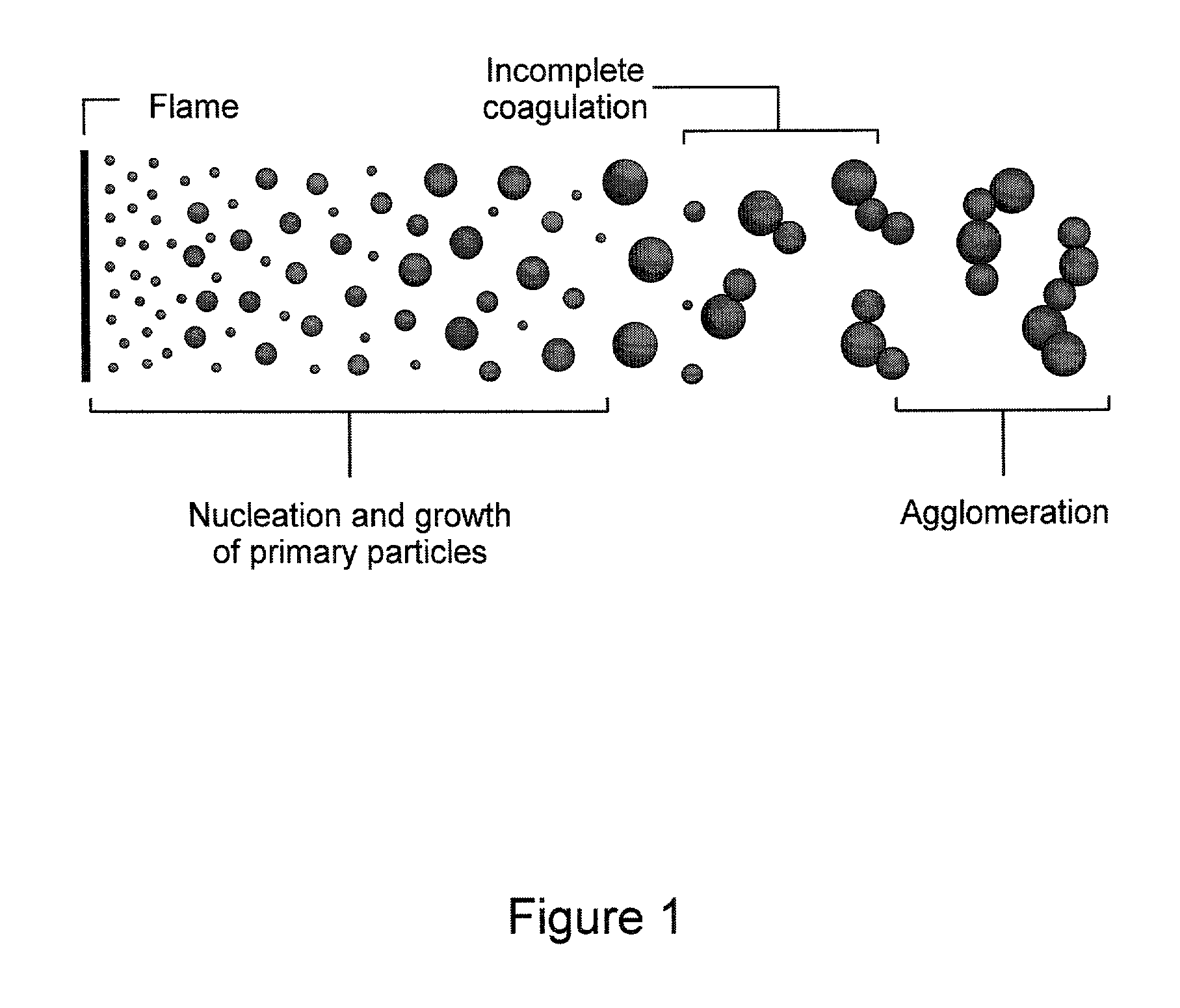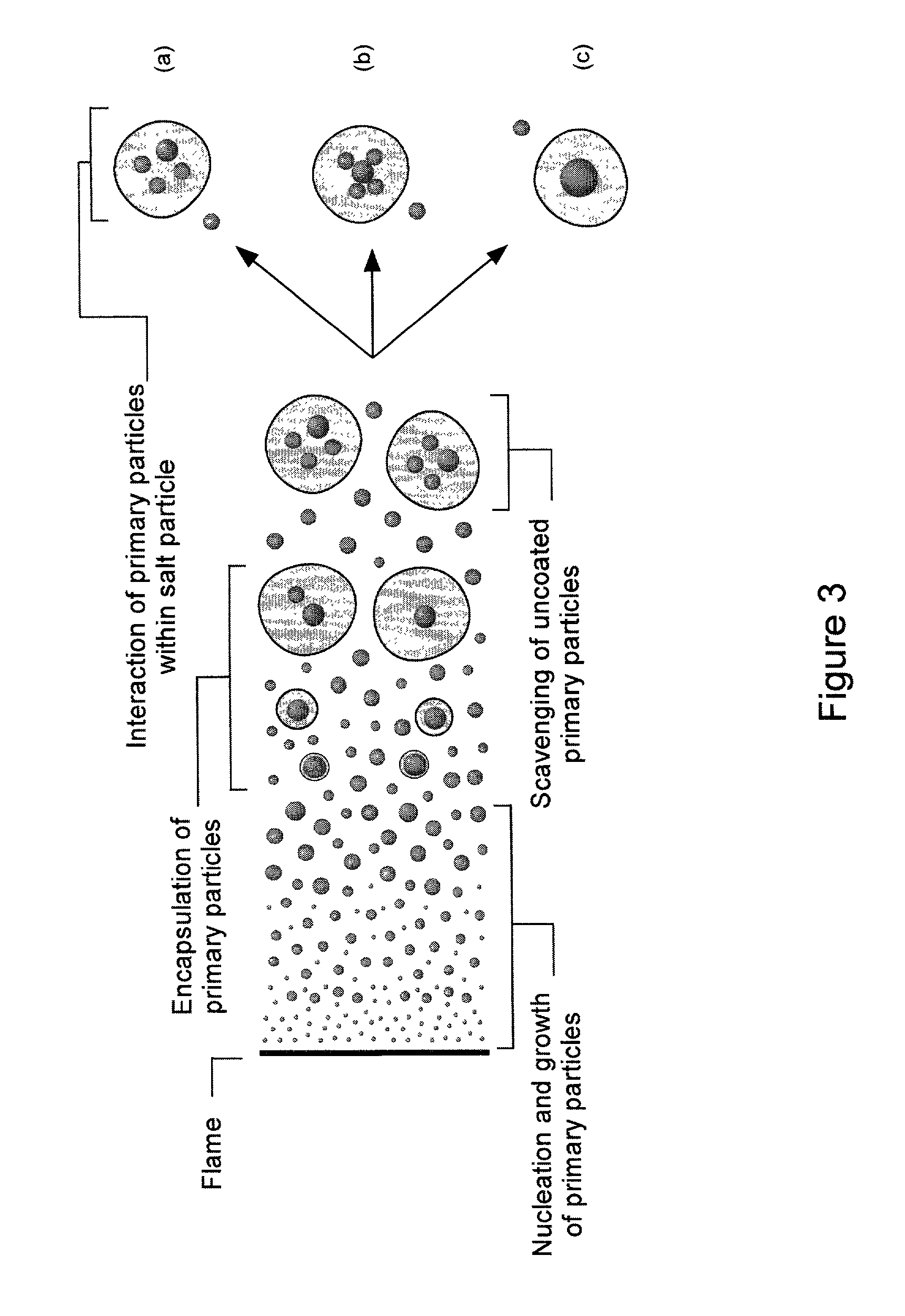Tightly agglomerated non-oxide particles and method for producing the same
a non-oxide particle, tight agglomeration technology, applied in the direction of electrolytic capacitors, material granulation, transportation and packaging, etc., can solve the problems of limited application range of ceramics, machining techniques, and inability to economically process ceramics by other methods, and achieve the effect of small particle size and high surface area
- Summary
- Abstract
- Description
- Claims
- Application Information
AI Technical Summary
Benefits of technology
Problems solved by technology
Method used
Image
Examples
Embodiment Construction
A. Production of Tightly Agglomerated Nanoparticles Through Encapsulation and Scavenging
[0054]The non-oxide powder of the present invention has been produced in a turbulent reactor where a gaseous alkali or alkaline earth metal reacts with a halide compound under suitable operating conditions. When the powder of the present invention is referred to as a non-oxide powder, what is meant is that the powder is substantially free of oxygen. Some minimal trace oxygen contamination may or may not be present (less than about 10,000 ppm by mass).
[0055]FIG. 9 depicts the reactor 120 used to produce the tight agglomerates of the present invention. In the preferred embodiment, at least one vapor phase halide compound and a vapor phase reactive metal are introduced into reaction zone 122. However, the reactants can be any set of reactants that will produce the primary particle material of the present invention. Preferably, the reaction results in (1) the formation of a plurality of primary parti...
PUM
| Property | Measurement | Unit |
|---|---|---|
| size | aaaaa | aaaaa |
| specific surface area | aaaaa | aaaaa |
| size | aaaaa | aaaaa |
Abstract
Description
Claims
Application Information
 Login to View More
Login to View More - R&D
- Intellectual Property
- Life Sciences
- Materials
- Tech Scout
- Unparalleled Data Quality
- Higher Quality Content
- 60% Fewer Hallucinations
Browse by: Latest US Patents, China's latest patents, Technical Efficacy Thesaurus, Application Domain, Technology Topic, Popular Technical Reports.
© 2025 PatSnap. All rights reserved.Legal|Privacy policy|Modern Slavery Act Transparency Statement|Sitemap|About US| Contact US: help@patsnap.com



